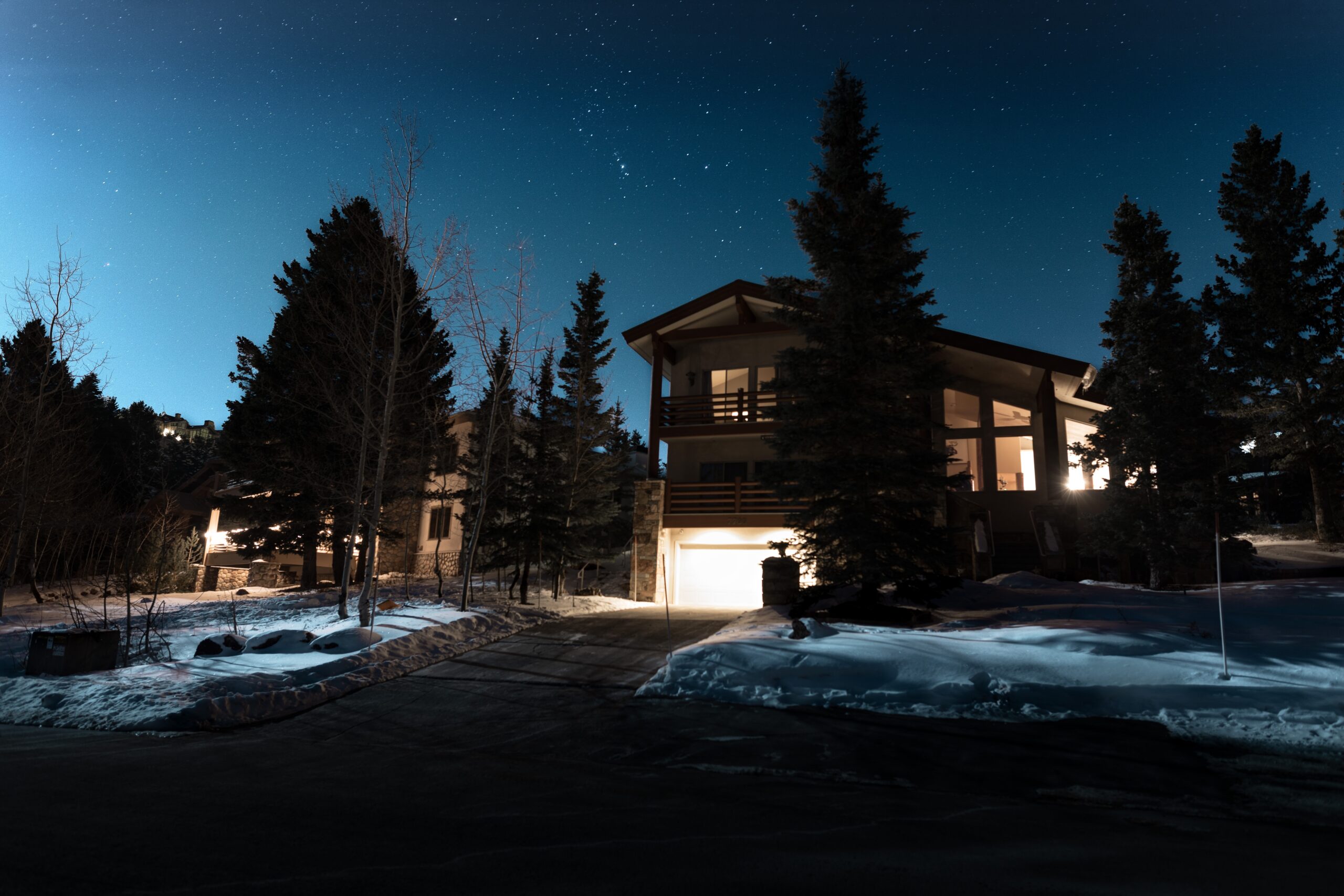Are you tired of shoveling snow and dealing with icy driveways during the winter months? Here, we’ll delve into the ins and outs of heated driveways to see what all the buzz is about. Say goodbye to the traditional methods of snow removal and discover the convenience and comfort of a heated driveway. This post is for you whether you are a homeowner interested in increasing your home’s worth or if you are just looking for better ways to deal with the winter season.
How Do Heated Driveways Work?
Heated driveways operate using a system of electric heating elements or water-based systems embedded beneath the surface of the driveway. These systems are controlled by a thermostat and can be activated manually or set to automatically turn on when the temperature drops below a certain level or when precipitation is detected. The heating elements or heated water circulate through the driveway, melting any snow or ice that accumulates.
Electric heating systems use heating cables or mats that are installed during the construction or renovation of the driveway. These systems are more common and easier to install in existing driveways.
Water-based systems, on the other hand, involve a network of pipes that carry heated water beneath the driveway surface. This type of setup is more typical for brand-new building endeavors.Electric and water-based systems each have their benefits and drawbacks, so it’s advisable to talk to an expert about which one might work best for you.
What Are The Benefits Of Heated Driveways?
Convenience
One of the main benefits of heated driveways is the convenience they provide. No more waking up early to shovel snow or spending hours outside in freezing temperatures. With a heated driveway, snow and ice melt automatically, leaving you with a clear and safe path to your home or garage.
Safety
Slippery driveways can be dangerous, increasing the risk of accidents and injuries. Heated driveways eliminate this risk by keeping the surface free from ice and snow. Slip and fall prevention is especially important for the elderly, young children, and persons with mobility disabilities.
Time-saving
Shoveling snow can be a time-consuming task, especially after a heavy snowfall. With a heated driveway, you can save valuable time and energy by eliminating the need for manual snow removal. This leaves you with more time to do the things you enjoy during the winter months.
Increased Property Value
Installing a heated driveway can significantly enhance the value of your property. In regions with harsh winters, this is a quality that is highly sought for by potential customers. You are raising the value of your house and enhancing your own quality of life when you make an investment in a heated driveway.
Cost-effective
While the upfront cost of installing a heated driveway may seem high, it can actually save you money in the long run. A heated driveway can save you money on maintenance and medical expenses by removing the need for manual snow removal and lowering the possibility of accidents and injuries. Furthermore, the usage of strong snow removal chemicals and freeze-thaw cycles can harm your driveway; heated driveways can prevent this from happening.
How Long Does It Take To Install a Heated Driveway?
On average, the installation of a heated driveway can take anywhere from a few days to a few weeks. The process typically involves several steps, including planning, excavation, insulation, heating element installation, pouring the concrete or asphalt, and electrical connections.
The first step is to plan the layout of the heated driveway. This involves determining the size, shape, and location of the driveway and deciding where to place the heating elements. This planning phase may take a few days or longer, depending on the complexity of the project and any necessary consultations with professionals.
Once the planning is complete, the next step is excavation. This involves removing the existing driveway or digging a trench for a new one. Excavation can take anywhere from a few hours to a few days, depending on the size and condition of the area.
After excavation, insulation is installed to prevent heat loss from the heated driveway. This step usually involves laying down insulation panels or mats and can be completed within a day or two, depending on the size of the driveway.
Next, the heating elements are installed. These can include electric cables, hydronic tubes, or electric mats depending on the type of heated driveway system being used. The installation of the heating elements can take a few days to a week, depending on the complexity of the system and the size of the driveway.
Once the heating elements are in place, the next step is to pour the concrete or asphalt for the driveway. This can be a time-consuming process as it requires proper curing and drying time. The pouring and curing process can take anywhere from a few days to a week, depending on the weather conditions and the size of the driveway.
Finally, the last step is to make the electrical connections for the heated driveway system. This involves connecting the heating elements to the power source and making sure everything is properly wired and functional. The electrical connections can usually be completed within a day or two.
Can a Heated Driveway Be Installed In Any Climate?
A heated driveway can be installed in any climate, including warm climates. While heated driveways are commonly associated with cold and snowy regions, they can also be beneficial in warmer climates.
In warm climates, a heated driveway can still provide advantages such as preventing ice formation during occasional cold snaps or dew formation during cooler nights. This can help to eliminate the need for manual de-icing methods or potential slip hazards.
Additionally, a heated driveway can be useful in preventing weed growth and reducing the need for chemical weed killers. The heat from the system can help inhibit weed germination, keeping your driveway looking clean and well-maintained.
Do Heated Drives Use The Same System For Heated Floors Indoors and Outdoors?
No, heated driveways do not use the same system as heated floors indoors. While both systems involve the use of heating elements to provide warmth, there are some key differences in the installation and operation of the systems.
Heated driveways typically use electric cables, hydronic tubing, or electric mats as heating elements. These elements are installed beneath the surface of the driveway to provide heat and prevent snow and ice buildup. The heating system is typically controlled by a thermostat and can be activated manually or set on a timer.
On the other hand, heated floors indoors usually use electric heating mats or hydronic systems. Electric heating mats are installed under the flooring material, such as tile or laminate, to provide radiant heat. Hydronic systems, on the other hand, use hot water or a mixture of water and antifreeze to circulate heat through a series of pipes installed under the floor.
The main difference between the two systems is the installation method and the purpose they serve. Heated driveways are designed to prevent snow and ice buildup, while heated floors indoors are primarily installed to provide comfort and warmth.
Conclusion
In conclusion, a heated driveway can be installed in any climate, including warm climates. It can provide advantages such as preventing ice formation, dew formation, and weed growth. However, it is important to note that heated driveways do not use the same system as heated floors indoors. The installation and operation methods differ, and the purpose they serve is also different. Heated driveways are designed to prevent snow and ice buildup, while heated floors indoors are primarily installed for comfort and warmth. If you are considering installing a heated driveway, it is recommended to consult with professionals who can provide guidance and expertise specific to your climate and needs.
Final Thoughts
Explore the world of landscaping with the expert team at Terracare Landscaping. Our skilled professionals excel in designing, building, and maintaining beautiful landscapes. With a 35-year history of serving multiple communities in New Jersey, such as Bergen County, Wyckoff, and Franklin Lakes, we are committed to bringing your dream home oasis to life. Contact us today to transform your outdoor living space!
Sources
1. https://www.iqsdirectory.com/articles/heating-element.html
2. https://www.sciencedirect.com/topics/engineering/water-based-system
4. https://www.warmup.com/blog/guide-to-electric-underfloor-heating-mats




